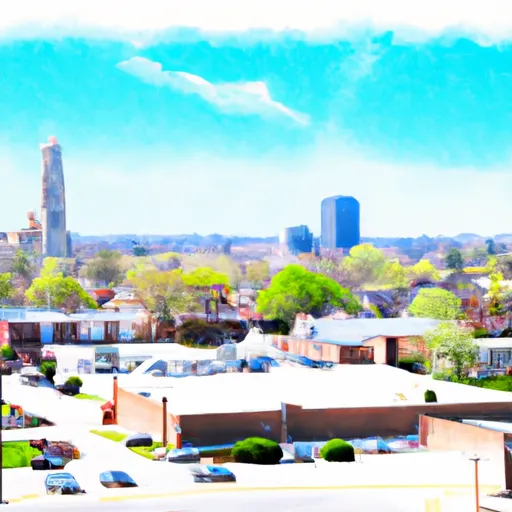-
 Snoflo Premium
Snoflo Premium
Get unlimited access to all our content
With no Ad interruptions! - Start Your Free Trial Login with existing account
Lombard
Eden Index
Climate
7.7
•
Recreation
4.6
•
Community
4.6
•
Safeguard
5.8/10

Lombard, Illinois is a suburban village located just 20 miles west of downtown Chicago. It experiences a humid continental climate, characterized by hot and humid summers, and cold winters with moderate snowfall. The average high temperature in summer is around 85°F (29°C), while the average low in winter is around 18°F (-8°C).
Hydrologically, Lombard lies in the Salt Creek watershed, with Salt Creek running through the village. This waterway provides opportunities for outdoor activities like canoeing, kayaking, and fishing. The creek is home to a variety of fish species, such as bass, catfish, and pike.
Lombard offers several outdoor recreation opportunities for nature enthusiasts. The village maintains multiple parks, trails, and open spaces, including the scenic Lombard Park District's Four Seasons Park and Lilacia Park, known for its beautiful collection of lilacs. Additionally, residents and visitors can explore the Great Western Trail, a popular multi-use trail that passes through Lombard, offering opportunities for walking, running, biking, and horseback riding.
Overall, Lombard's diverse climate, hydrology, and array of outdoor activities make it an appealing destination for individuals seeking both natural beauty and proximity to urban amenities.
What is the Eden Index?
The Snoflo Eden Index serves as a comprehensive rating system for regions, evaluating their desirability through a holistic assessment of climate health, outdoor recreation opportunities, and natural disaster risk, acknowledging the profound impact of these factors on livability and well-being.
Climate Health Indicator (CHI): 7.7
Lombard receives approximately
959mm of rain per year,
with humidity levels near 80%
and air temperatures averaging around
10°C.
Lombard has a plant hardyness factor of
5, meaning
plants and agriculture in this region thrive during a short period during spring and early summer. Most
plants will die off during the colder winter months.
By considering the ideal temperature range, reliable water supplies, clean air, and stable seasonal rain or snowpacks, the Climate Health Indicator (CHI) underscores the significance of a healthy climate as the foundation for quality living.
A healthy climate is paramount for ensuring a high quality of life and livability in a region, fostering both physical well-being and environmental harmony. This can be characterized by ideal temperatures, reliable access to water supplies, clean air, and consistent seasonal rain or snowpacks.
Weather Forecast
Streamflow Conditions
Upper Illinois
Area Rivers
Upper Illinois
Snowpack Depths
Upper Illinois
Reservoir Storage Capacity
Upper Illinois
Groundwater Levels
Recreational Opportunity Index (ROI): 4.6
The Recreational Opportunity Index (ROI) recognizes the value of outdoor recreational options, such as parks, hiking trails, camping sites, and fishing spots, while acknowledging that climate plays a pivotal role in ensuring the comfort and consistency of these experiences.
Access to outdoor recreational opportunities, encompassing activities such as parks, hiking, camping, and fishing, is crucial for overall well-being, and the climate plays a pivotal role in enabling and enhancing these experiences, ensuring that individuals can engage in nature-based activities comfortably and consistently.
Camping Areas
| Campground | Campsites | Reservations | Toilets | Showers | Elevation |
|---|---|---|---|---|---|
| Mousetail Landing State Park | 24 | 429 ft | |||
| Piney - LBL | 300 | 385 ft | |||
| Nathan Bedford Forrest State Park | 53 | 437 ft | |||
| Rushing Creek - LBL | 56 | 402 ft | |||
| Gatlin Point - LBL | 19 | 453 ft | |||
| Gatlin Point | 30 | 433 ft | |||
| Paris Landing State Park | 63 | 392 ft | |||
| Boswell Landing | 34 | 406 ft | |||
| Beech Bend | None | 373 ft | |||
| Bumpus Mills - Lake Barkley | None | 520 ft |
Nearby Ski Areas
Catastrophe Safeguard Index (CSI):
The Catastrophe Safeguard Index (CSI) recognizes that natural disaster risk, encompassing floods, fires, hurricanes, and tornadoes, can drastically affect safety and the overall appeal of an area.
The level of natural disaster risk in a region significantly affects safety and the overall livability, with climate change amplifying these risks by potentially increasing the frequency and intensity of events like floods, fires, hurricanes, and tornadoes, thereby posing substantial challenges to community resilience and well-being.
Community Resilience Indicator (CRI): 4.6
The Community Resilience Indicator (CRI) recognizes that education, healthcare, and socioeconomics are crucial to the well-being of a region. The CRI acknowledges the profound impact of these elements on residents' overall quality of life. By evaluating educational resources, healthcare accessibility, and economic inclusivity, the index captures the essential aspects that contribute to a thriving community, fostering resident satisfaction, equity, and social cohesion.

